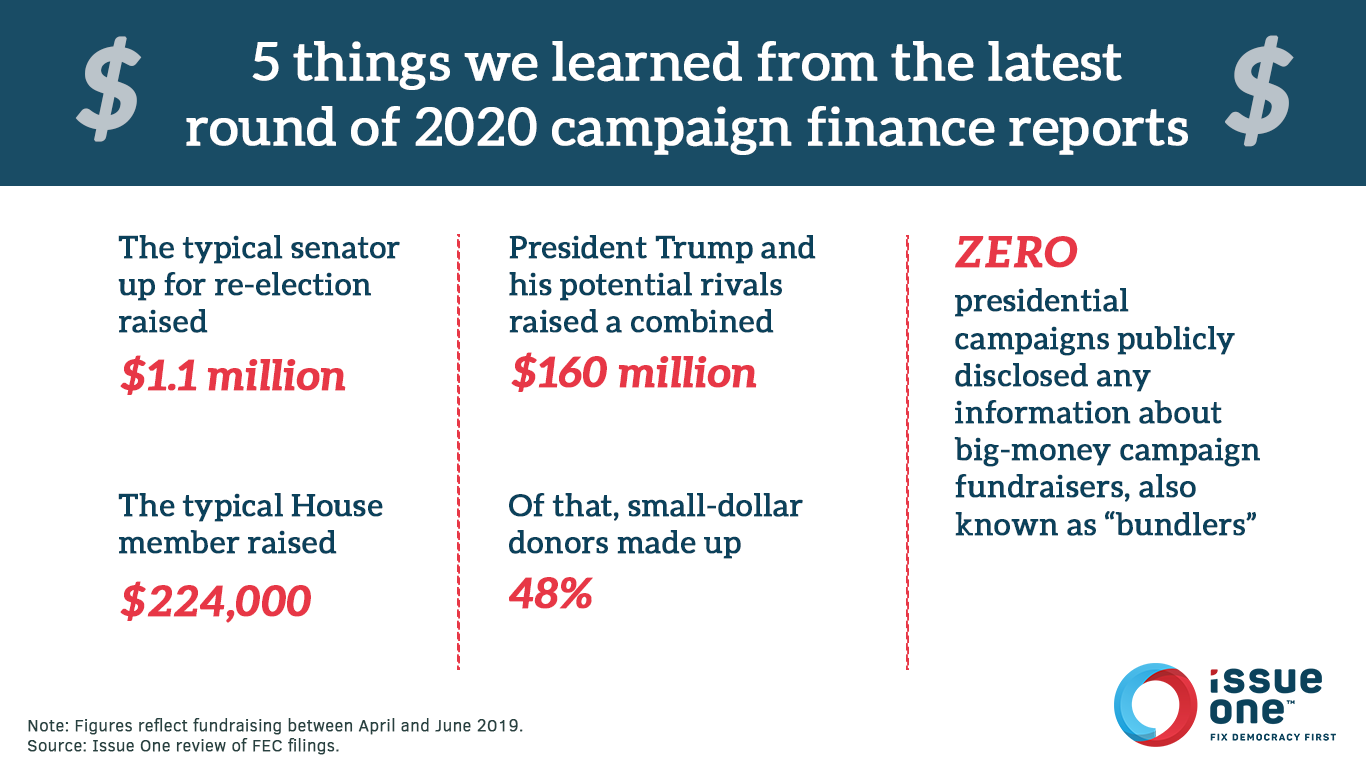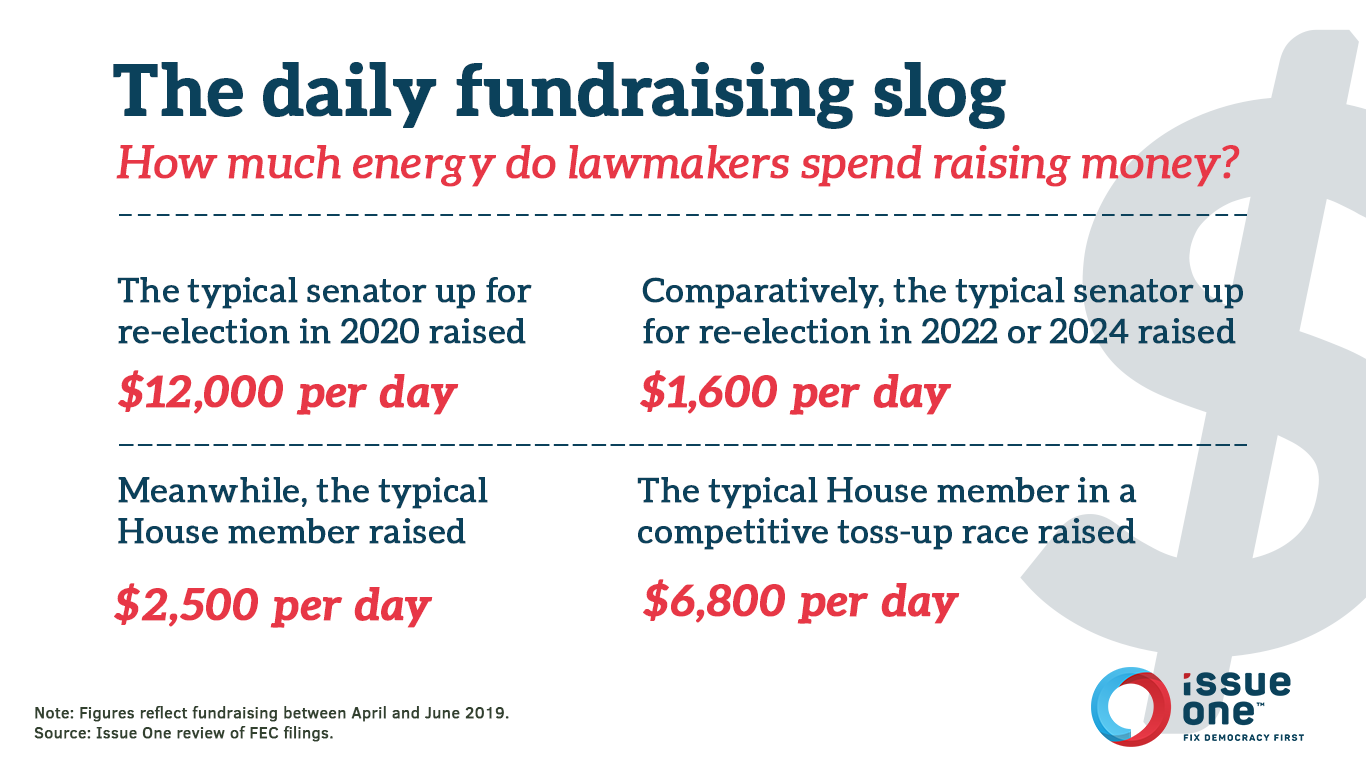Analysis
Congress has collectively spent 94 years fundraising since 2015
Since 2015, our elected leaders have had to spend hours fundraising, instead of doing their jobs. One of the biggest problems with our campaign finance system is that the…
Analysis
Congressional and presidential candidates alike filed their latest batch of campaign finance reports on Monday, detailing their fundraising and expenditures between April 1 and June 30.
Here are some key numbers to know, based on an Issue One review of these new filings.
$1.1 million
The median amount of money raised during the second quarter by a sitting senator running for re-election in 2020 was $1.1 million — the equivalent of about $12,000 per day. That’s more than seven times as much money as their colleagues who are not facing re-election next year raised: The median amount that senators up for re-election in 2022 and 2024 collected was $147,000 — about $1,600 per day. Combined, all incumbent senators raised about $56 million from individuals, political action committees, and other sources between April and June. That’s an increase from the first quarter, when the typical senator running for re-election in 2020 raised $936,000.
$224,000
The median amount of money raised during the second quarter by a member of the House of Representatives was approximately $224,000 — or about $2,500 per day. Meanwhile, the median amount raised by House freshmen was about $367,000 — or about $4,000 per day. For their part, the typical incumbent running for re-election in a race rated as a toss-up by the Cook Political Report raised roughly $616,000 — about $6,800 per day. Combined, all incumbent House members raised about $126 million from individuals, political action committees, and other sources between April and June. That’s up substantially from the first quarter of the year, when the typical House member running for re-election in a toss-up race raised $435,000.
$160 million
President Donald Trump and the Democratic and Republican candidates vying to replace him combined to raise about $160 million between April 1 and June 30, with Trump’s campaign alone collecting about $26 million. Among the Democratic candidates, Pete Buttigieg, the mayor of South Bend, Indiana, raised the most, at $25 million. Close at his heels, former Vice President Joe Biden raised $22 million, Sen. Elizabeth Warren raised $19 million, and Sen. Bernie Sanders raised $18 million.
48%
About 48% of the $160 million raised by President Donald Trump and his challengers during the second quarter came from small-dollar donors contributing $200 or less. About 40% of the money Trump raised — and about 49% of the money collected by Democratic presidential candidates — came from small-dollar donors giving $200 or less. Such grassroots donors are important because they are more likely to be invested in the political process, to volunteer during the election, and to vote on Election Day, and they can be tapped by candidates to donate over and over again throughout the campaign.
More than two dozen 2020 presidential candidates combined to raise about $160 million during the second quarter from individuals, @IssueOneReform analysis of @FEC data shows — with about HALF of that sum ($76 million) coming from small-dollar donors who each gave $200 or less pic.twitter.com/B9sAStLiTC
— Michael Beckel (@mjbeckel) July 16, 2019
Zero
On Monday, no presidential campaign publicly disclosed any information about its bundlers — those people who raise money on behalf of a candidate and are credited by the campaign for their efforts. Issue One has spearheaded efforts by a broad coalition of groups from across the ideological spectrum to urge all presidential candidates to release information about these elite fundraisers — something that Democrats and Republicans alike have done in the past.
Amisa Ratliff contributed to this report.


